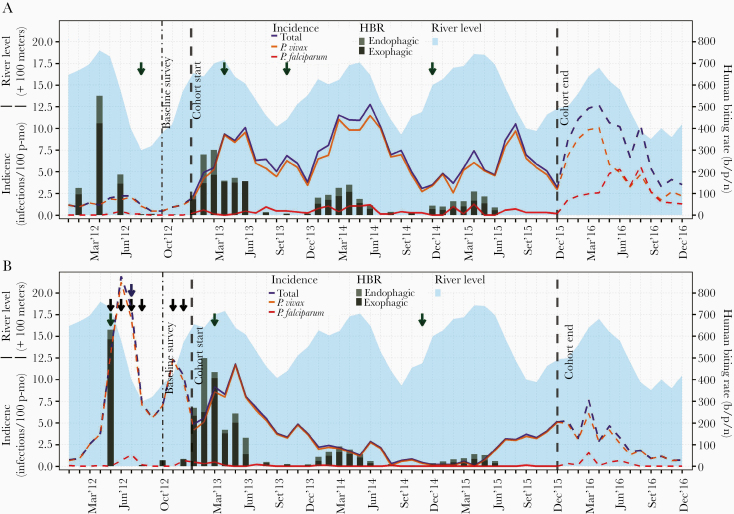Figure 5.
Evolution of monthly incidence of malaria infections by microscopy, Amazon river levels and human biting rates (HBR) in Lupuna (A) and Cahuide (B) from January 2012 to December 2016. Dashed lines represent incidence in 2012 and 2016 estimated with surveillance data, while solid lines in 2013-2015 with cohort data. HBRs were estimated using published entomological data from 12-h mosquito collections by human landing catch (HLC) before the study in 2012, from January to June in 2013-2015, and in August, October and December 2013-2014. Monthly water levels of the Amazon River were calculated with daily data from the Peruvian Amazon Service of Hydrography and Navigation. Green, blue, and black arrows indicate months when respectively indoor residual spraying (IRS) with 5% deltamethrin, distribution of long-lasting insecticidal nets (LLINs), and population screenings using microscopy and treatment of confirmed infections were conducted. The left Y-axis indicates incidence rates (number of infections/100 person-months) and river levels (meters above 100), while the right Y-axis human biting rates (bites/person/night). see online version for color figure.

